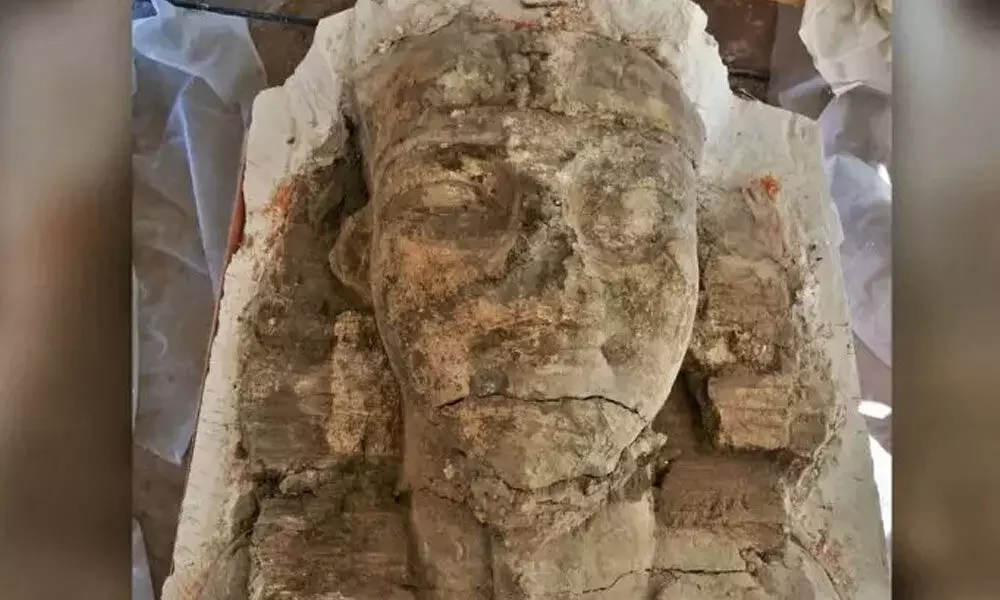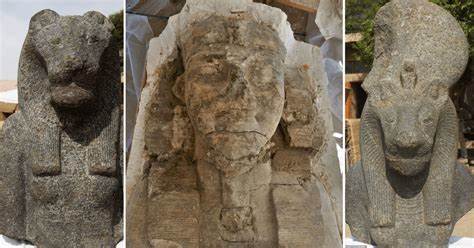Archeologists found two large sphinx statues during the restoration of a temple in Luxor, Egypt. The “Temple of Millions of Years” was a vast funerary temple of King Amenhotep III, who ruled about 3300 years ago. Those limestone statues measured around 27 feet in length.
According to the Egyptian Ministry of Tourism and Antiquities, two gigantic sphinx statues were found by archeologists. Statues were originally about 27 feet long when they were created for King Amenhotep III, a king of the 18th-dynasty whose reign was from 1390 BCE TO 1353 BCE. His reign was known for its peace and prosperity.
It was announced in a statement by the Egyptian Ministry of Tourism and Antiquities on Jan.13, that the team of Egyptian-German archeologists had discovered the statues in the ancient capital of Thebes(known as Luxor) at the temple of King Amenhotep III, which was known as “Temple of Millions of Years” by ancient Egyptians.

These depictions of Amenhotep III in form of sphinxes are known as Colossi. The colossi of Memnon and Amenhotep III Temple Conservation Project, which started in 1998 has discovered ruins of some Columns and walls at the funerary temple that was adorned by the ancient Egyptians with inscriptions of ceremonial and ritual scenes. It was mentioned by Al-Monitor.
Mustafa Waziri, secretary-general of the Supreme Council of Antiquities said that the two colossi show Amenhotep III in a mongoose-shaped headdress, a royal beard, and a broad necklace.
“This temple housed a large number of statues, models, and wall decorations, before it was hit by a devastating earthquake in 1200 BC,” Egyptologist Hourig Sourouzian, the head of the archaeological mission, told Al-Monitor.
The team found three black granite sculptures of the goddess “Sekhmet”, a goddess of war also associated with healing which is often depicted as a part lion. It was portrayed as having the head of a lion on the body of a woman.

Dr. Horig Sorosian, head of the Mission said in a statement that the large sphinxes indicated the location of a procession road used to celebrate the festivals. Further, Sourouzian told Al-Monitor, “In the peristyle, the newly discovered pieces of wall relief reveal new scenes of the Heb-Sed, a festival of the king started after 30 years of his rule and repeated every three years thereafter.”
The Heb-Sed festival was “one of the most important feasts for ancient Egyptians that celebrates the end of the 30th year of the king’s ascension to the throne,” Abdel Rahim Rihan told Al-Monitor.
This vast funerary temple, built close to the Nile river by King Amenhotep III, was destroyed by an earthquake that swept Ancient Egypt. The purpose of the mortuary temple was as a place for presentations for Amenhotep III after his death and movement into the afterlife.
After surveying the site, the team had investigated the ruins. The conservation project had four parts, the archeologists noted. Finally, it was mentioned by Sourouzian that the team would manage the site.


